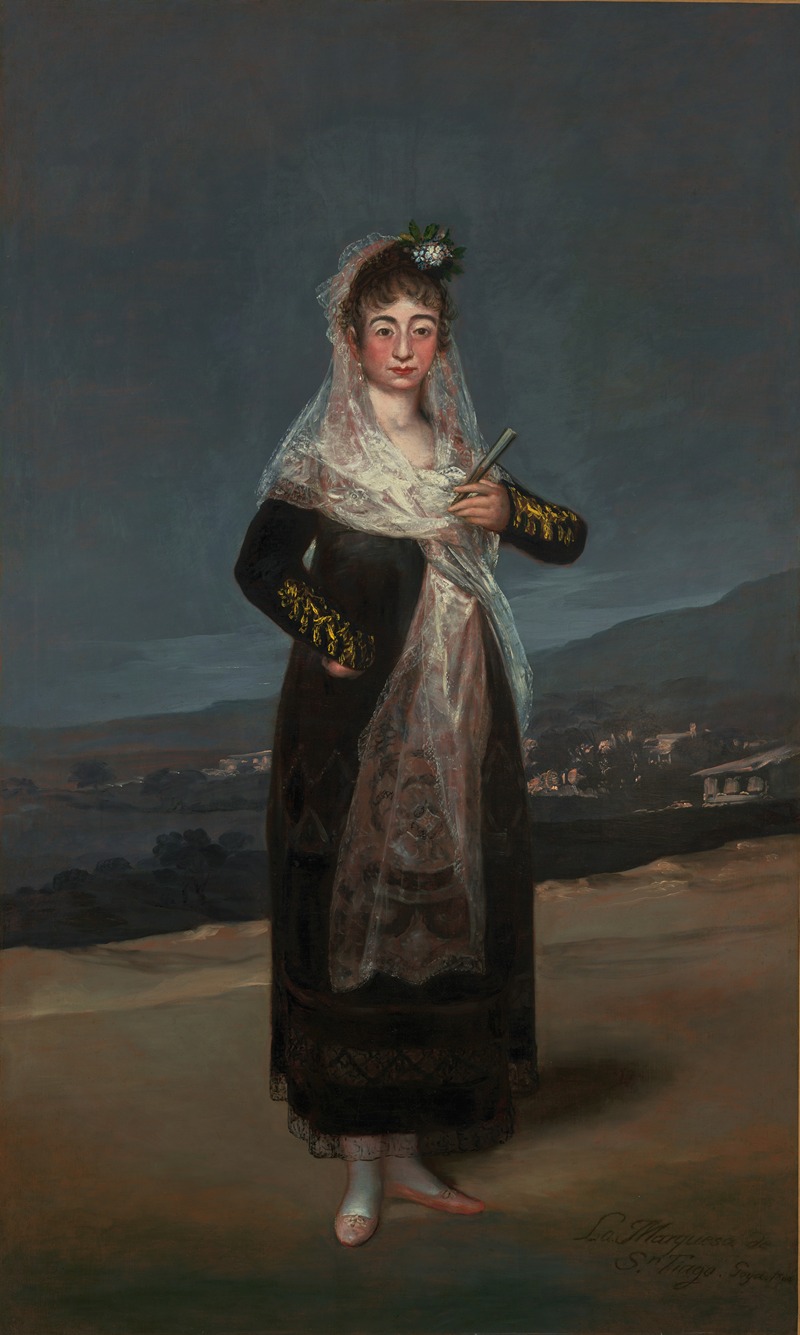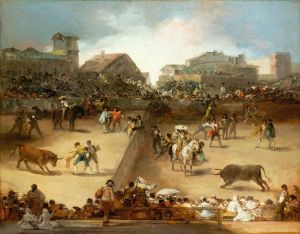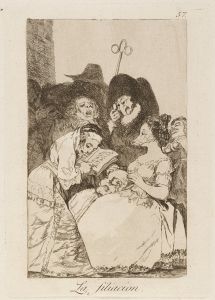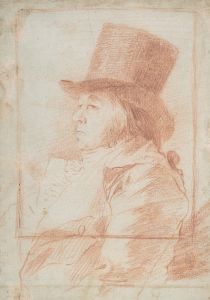
Portrait of the Marquesa de Santiago
A hand-painted replica of Francisco de Goya’s masterpiece Portrait of the Marquesa de Santiago, meticulously crafted by professional artists to capture the true essence of the original. Each piece is created with museum-quality canvas and rare mineral pigments, carefully painted by experienced artists with delicate brushstrokes and rich, layered colors to perfectly recreate the texture of the original artwork. Unlike machine-printed reproductions, this hand-painted version brings the painting to life, infused with the artist’s emotions and skill in every stroke. Whether for personal collection or home decoration, it instantly elevates the artistic atmosphere of any space.
Francisco de Goya, one of Spain's most renowned painters, created the "Portrait of the Marquesa de Santiago" during his prolific career in the late 18th and early 19th centuries. Goya is celebrated for his ability to capture the essence of his subjects with a keen psychological insight, and this portrait is no exception.
The "Portrait of the Marquesa de Santiago" is a testament to Goya's skill in portraying the Spanish aristocracy with both elegance and depth. The painting depicts the Marquesa de Santiago, a noblewoman whose identity is tied to the Spanish nobility. As with many of Goya's portraits, the work is characterized by its attention to detail and the subtlety with which the artist conveys the personality and status of his subject.
In this portrait, the Marquesa is presented with a sense of grace and poise. Goya's use of color and light highlights the luxurious textures of her attire, which is typical of the fashion among the Spanish elite during this period. The Marquesa's expression is serene yet commanding, reflecting her high social standing and the dignity associated with her title. Goya's ability to render the delicate features of her face and the intricate details of her clothing demonstrates his mastery of portraiture.
Goya's portraits often went beyond mere representation, offering a glimpse into the character and inner life of his subjects. In the "Portrait of the Marquesa de Santiago," this is evident in the way he captures the Marquesa's gaze, which seems to convey both confidence and introspection. This duality is a hallmark of Goya's work, where the surface appearance often hints at deeper, more complex emotions.
The painting is also notable for its composition. Goya employs a balanced arrangement, with the Marquesa positioned centrally, drawing the viewer's attention immediately to her figure. The background is kept relatively simple, ensuring that the focus remains on the subject. This compositional choice is typical of Goya's portraits, where the emphasis is placed on the individual rather than the setting.
Goya's work during this period was marked by his role as a court painter, which provided him with numerous opportunities to paint members of the Spanish aristocracy. His portraits from this time are valued not only for their artistic merit but also for their historical significance, offering insights into the fashion, culture, and personalities of Spain's elite.
The "Portrait of the Marquesa de Santiago" is a fine example of Goya's ability to blend technical skill with psychological depth, making it a significant piece in the study of his oeuvre. While specific details about the Marquesa herself may be limited, the portrait remains a valuable artifact of its time, reflecting the social and cultural milieu of late 18th-century Spain.
In summary, Francisco de Goya's "Portrait of the Marquesa de Santiago" is a masterful depiction of a Spanish noblewoman, showcasing the artist's exceptional talent in capturing both the physical likeness and the inner essence of his subjects. Through his use of composition, color, and expression, Goya creates a portrait that is both a personal representation and a broader reflection of the era's aristocratic society.















![A Woman and a Horse, Let Someone Else Master Them [The Horse-Abductor]](/imgs/264582/s/francisco-de-goya-a-woman-and-a-horse-let-someone-else-master-them-the-horseabductor-5fe8d731.jpg)


